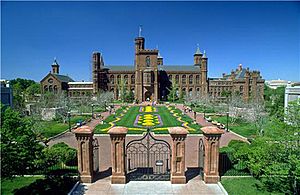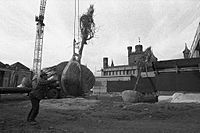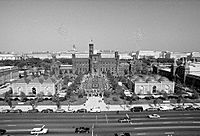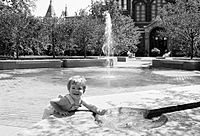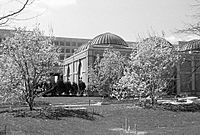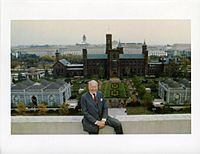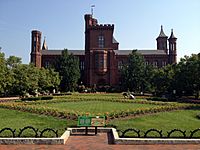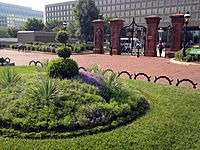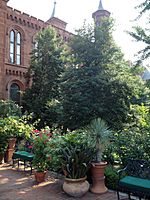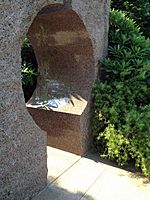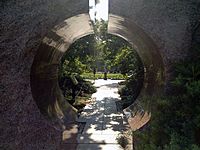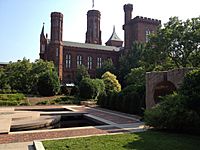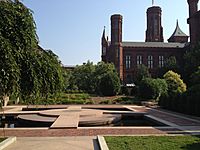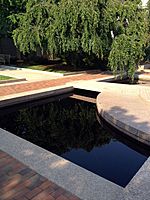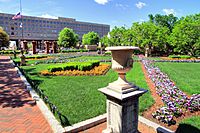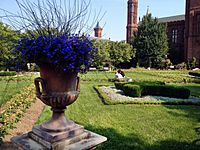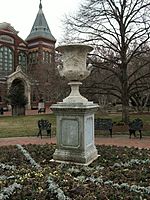Enid A. Haupt Garden facts for kids
The Enid A. Haupt Garden is a beautiful 4.2-acre public garden in Washington, D.C.. It's part of the famous Smithsonian museums complex. You can find it right next to the historic Smithsonian Institution Building (often called the "Castle"). This garden was designed to look like the fancy American Victorian gardens from the mid-to-late 1800s. It replaced an older Victorian garden that was built to celebrate America's 200th birthday in 1976.
Contents
Discovering the Haupt Garden
The Enid A. Haupt Garden officially opened on May 21, 1987. It was part of a big project to redesign the area around the Smithsonian Castle. The garden is named after Enid A. Haupt, a very generous person. She gave $3 million to pay for the garden's building and its care over time. This kind of gift, meant to support something for a long time, is called an endowment.
When she was first asked to help, they only wanted her to fund a small Zen garden. But after seeing the full plans, Ms. Haupt said she wanted to pay for the whole garden. She wasn't interested in just a small part!
How the Garden Began
The idea for the garden came from S. Dillon Ripley. He was the eighth leader, or Secretary, of the Smithsonian. Mr. Ripley believed that the museum experience shouldn't just be inside the buildings. He thought it should also include the beautiful outdoor spaces. The Haupt Garden was a big part of his vision for the Smithsonian Gardens.
Designing a Special Place
Many talented people worked together to design the Enid A. Haupt Garden. Jean Paul Carlhian, an architect, helped lead the design. Lester Collins, a landscape architect, also contributed. Sasaki Associates Inc. and James R. Buckler, who started the Smithsonian's Office of Horticulture, were also key designers. They all worked to create this unique space.
What You'll See in the Garden
The main part of the garden is a perfectly balanced parterre. A parterre is a flat garden with paths and flowerbeds arranged in patterns. This one is 144 feet long and 66 feet wide. The plants that fill the patterns, like diamonds and scallops, are changed twice a year. This usually happens in September and May.
On one side of the parterre is the Moongate Garden. On the other side, you'll find the Fountain Garden. Other cool things to see include beautiful saucer and tulip magnolias. There are also brick walkways and old-fashioned cast-iron garden furniture. These pieces are from the Smithsonian Gardens' own collection. You can also spot the Andrew Jackson Downing Urn. It sits in a circle in the garden's northeast section.
Gallery
-
Andrew Jackson Downing Urn and the Smithsonian Institution's Arts and Industries Building


